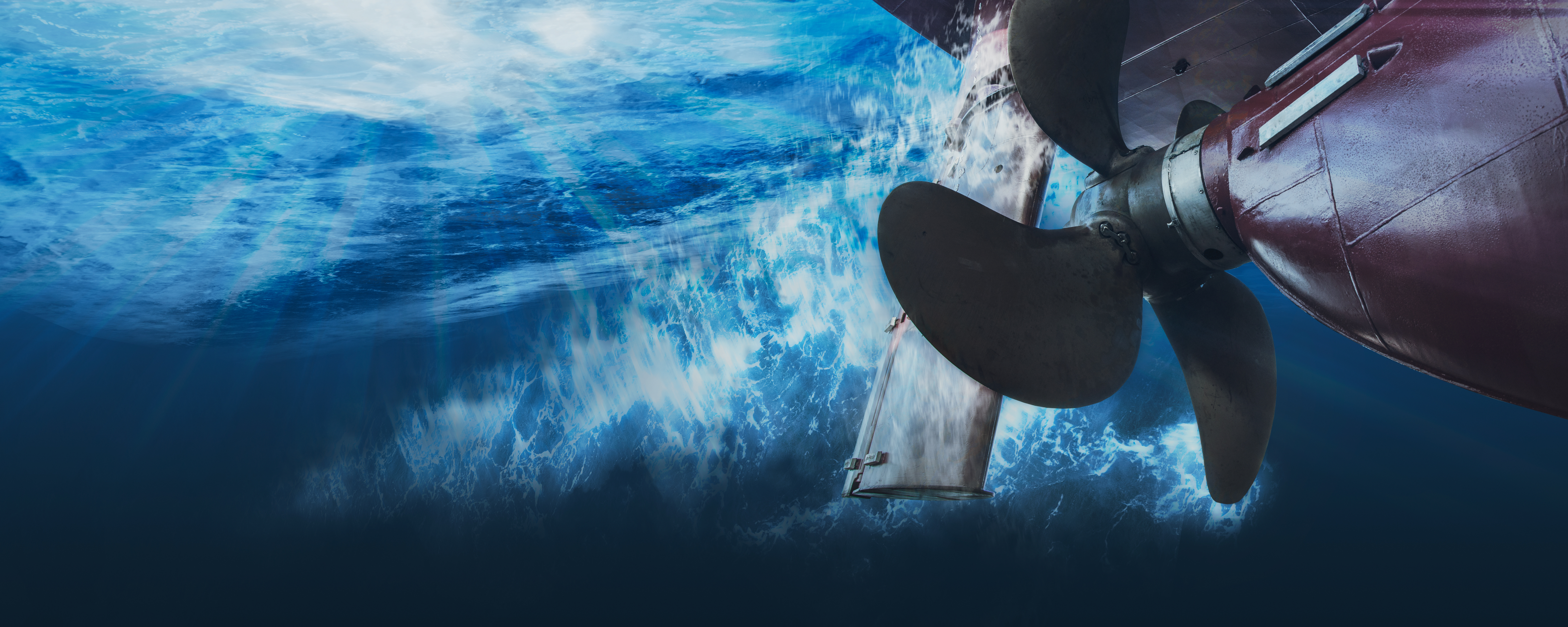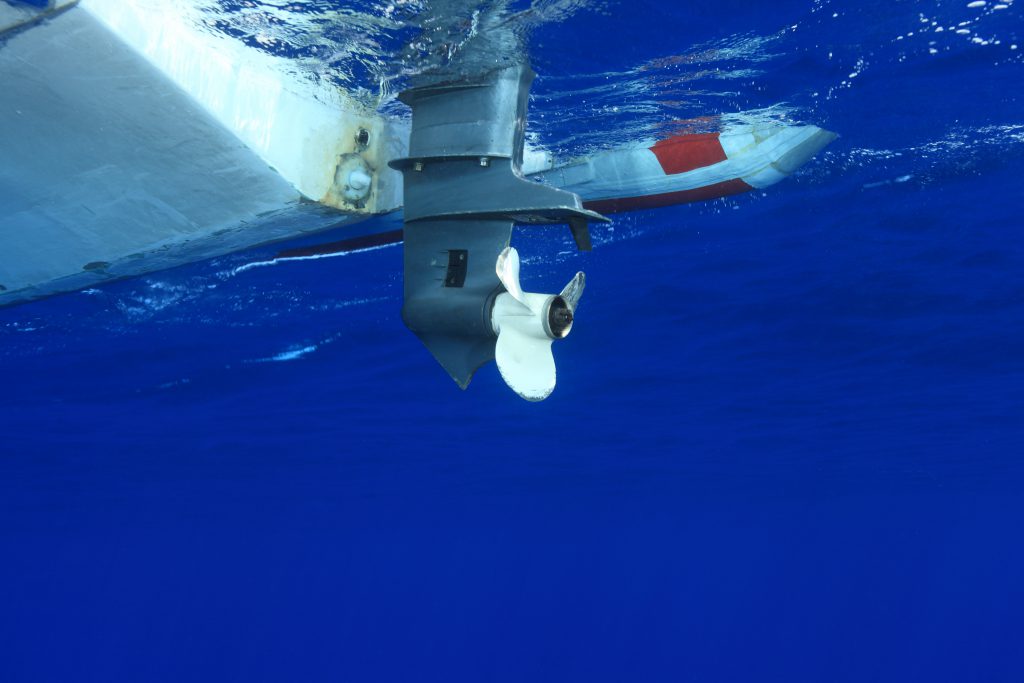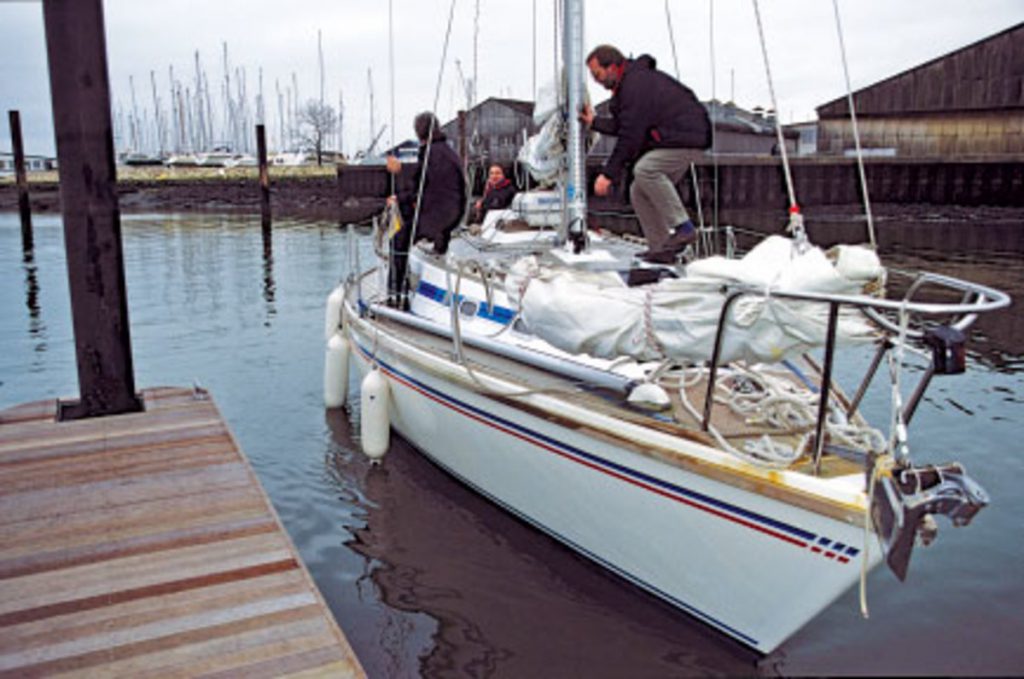Prop Walk – Your low speed friend
May 5th, 2023 by team

by B.J. Porter (Contributing Editor)
More years ago than I care to admit, my wife and I took an offshore sailing and cruising course. It was fantastic, and we learned loads of valuable skills during a week spent sailing from Florida to the Bahamas, living on board with three other students and the instructor. But as a near-novice sailor, the most immediate thing with an enormous impact that I learned wasn’t about plotting a course across the Gulf Stream or doing quick-stop Crew Overboard recovery.
Those were all important things to know. But what helped me the most the very next time I set foot on my boat was understanding prop walk, and how to use it. Overnight, my docking skills changed with a major upgrade.
What is Prop Walk?

When your propeller spins in gear, it produces thrust that drives your boat forward. Indeed, most of the force of the propeller contributes to the direction of motion. But not all of it.
A propeller is far from 100% efficient, and a simple unidirectional propeller (like most sailboats have) pushes water in multiple directions. The primary direction of thrust is aft when the transmission is in forward of, and forward when the boat is in reverse. But there is also an element of side thrust, akin to what a paddle-wheel produces. And this causes the propeller to “walk” to one side of the other.
At high revolutions per minute, the ratio of forward thrust to the side force is overwhelming, and prop walk becomes negligible. But at speeds close to idle, the forward thrust is less pronounced, and prop walk will visibly swing the stern. And you can use this.
Right and Left Handed
To envision how your prop walk develops, picture your propeller spinning at low speed. Viewed from the stern, a right-handed propeller rotates clockwise to go forward. Now, swing your view around to the side of the boat and look at that propeller. It’s not flat, not even close to it – propellers are pitched screws, and they’re always several inches deep.
That thick twist of the blades acts like a paddlewheel, creating a sideways thrust away from the spin direction. So a right-handed propeller in forward gear will push the stern of the boat to starboard. In reverse, it will push it to port.
More Walk in Reverse
Propellers are optimized for forward motion, and for most of us, that means our boats back much more slowly than they go forward. This also means that in reverse gear, prop walk is stronger because the propeller pitch is so much more inefficient.
If you want to see the effect on your own boat, just go to some open water on a flat day. Pop your boat into reverse and leave it in idle with the rudder centered. Almost all sailboats will walk, our last boat would idle in complete circle to port if you let it, the walk was so pronounced.
And this is very helpful.
Using your prop walk

For low-speed maneuvering, your prop walk is almost like a low power stern thruster if you work it right. It can help you with several tight maneuvers and make you look like a pro in close quarters.
These techniques don’t work at high speeds, you need to let the walk do the work.
Cautions:
- Go EASY on the throttle. Do most of this at idle.
- Always pause between forward and reverse to let the transmission stop spinning every time. Do NOT slam it back and forth without pause or you may damage your transmission.
- Keep a sharp eye on your overhangs. You don’t want to clip your davits or anchor on something!
- Don’t forget about wind and current, both can make these maneuvers more difficult.
Stopping at the dock
We should always approach docks at low speed. But if you know which way your boat walks in reverse, approach the dock with that side of the boat. You can glide up to the dock at an angle, and in the last seconds pop it into reverse and let it idle. Not only will this bring your boat to a dead stop, but it will swing your stern in for a nice, gentle landing with the boat parallel to the dock. At that point you can just step off and attach your spring lines to tie up.
Practice makes perfect, and don’t forget the current and wind!
Close quarters maneuvering (I)
At very low speeds, with the judicious use of prop walk and the rudder, you can turn most sailboats completely around in a tight space. You need some room to move to get a little steerage, but not much. This is a good thing to practice in open water before you try it in a marina!
Repeat the following steps as needed to execute a tight space turn. This instruction assumes a right-hand prop. Reverse the helm for left-hand props.
- With the boat barely moving, turn the wheel to port (or push the tiller to starboard) and engage in reverse.
- When the stern swings to port, put the engine in neutral. You can coast a little if moving, and the rudder will turn you.
- Put the engine in forward and reverse the helm; this should kick the bow to starboard.
- After a few seconds in gear, put the engine in neutral.
- Repeat from step one, walking the boat a little back and forth and moving the stern and bow each time until the boat is pointing where you need it.
Close quarters (II)
Prop walk can turn a low-speed turn into a sharp turn. One of the more memorable exercises in our week in the Bahamas was turning into then swinging out of a tight corner on the sailing school boat, a fairly heavy Endeavour 40 with a healthy bit of right hand walk.
While prop walk moves the stern, you can’t move the stern without moving the bow as well. To making a tight turn sharper, try the following on a right-hand boat, making a turn to starboard in tight quarters.
- Start turning the boat to starboard with the boat in forward.
- As you turn, put the engine into neutral, then reverse.
This will drag the stern further to port and kick the bow to starboard more quickly. If you slow down and lose steerageway, you may need to re-engage forward, so don’t be too aggressive in reverse!
How does your boat walk?

If you don’t know exactly how your own prop walks at low speed, you need to learn. The type of prop you have coupled with your hull form will determine how much prop walk you can rely on. The best way to learn is to discover it for yourself.
Full and 3/4 keel boats track well, but may walk less. Two bladed folding props will give a different walk from three-bladed fixed, folding, and feathering propellers. Your prop walk may increase a little above idle before getting overwhelmed by the forward thrust and disappearing, or only show up at idle.
Take your boat out on a quiet day and do some low speed maneuvering. Reverse in idle and see how she moves, then try the same thing in forward. Vary the amount of throttle and note the effects. When you understand it, you’re ready to try it near the docks!
Note – this is a lot less effective for twin screw power boats and contra-rotating props. But if you have those, you usually are more maneuverable to begin with!
- Posted in Blog, Boat Care, Boating Tips, Cruising, iNavX, Navigation, Sailing, Sailing Tips
- 1 Comment
- Tags: Boating, docking, prop, prop walk, Sailing


May 22, 2023 at 2:27 pm, Eileen Edmonds said:
I’m a trainer and Instructor. I’d like permission to use your re print this article and the Spring Line article. Thank you.